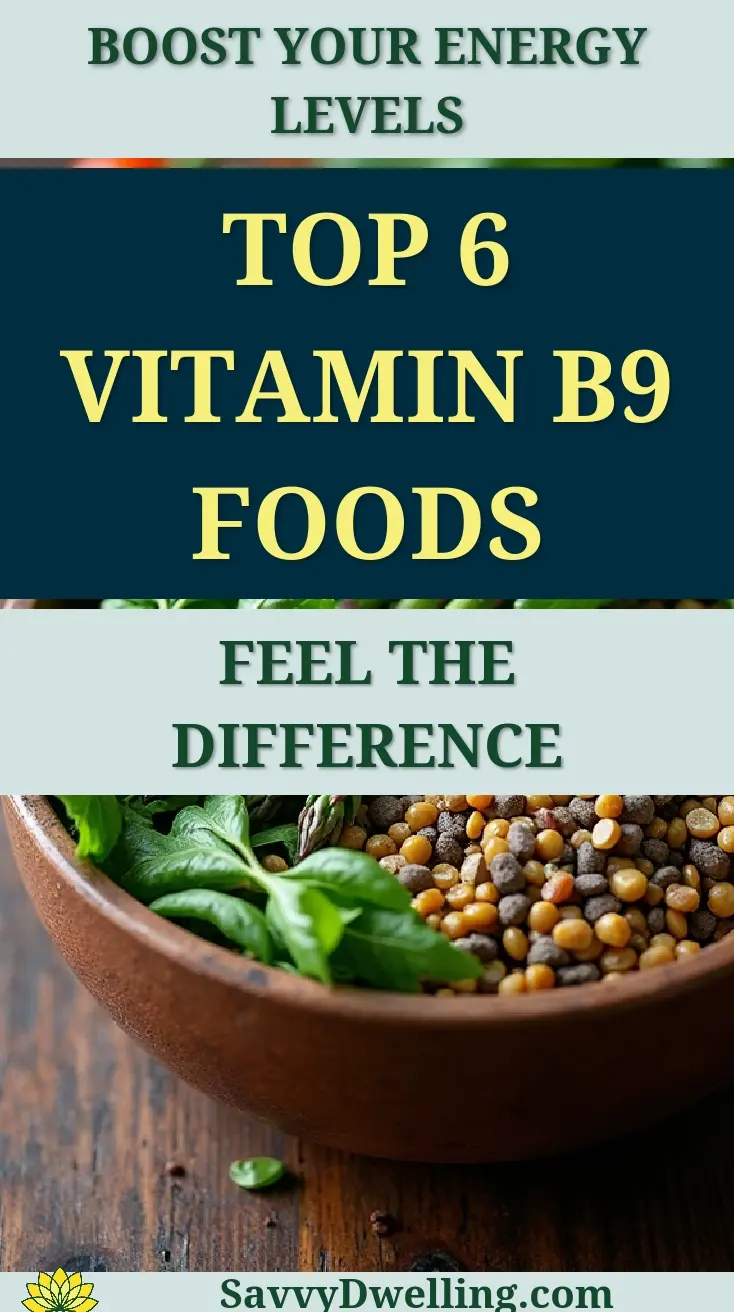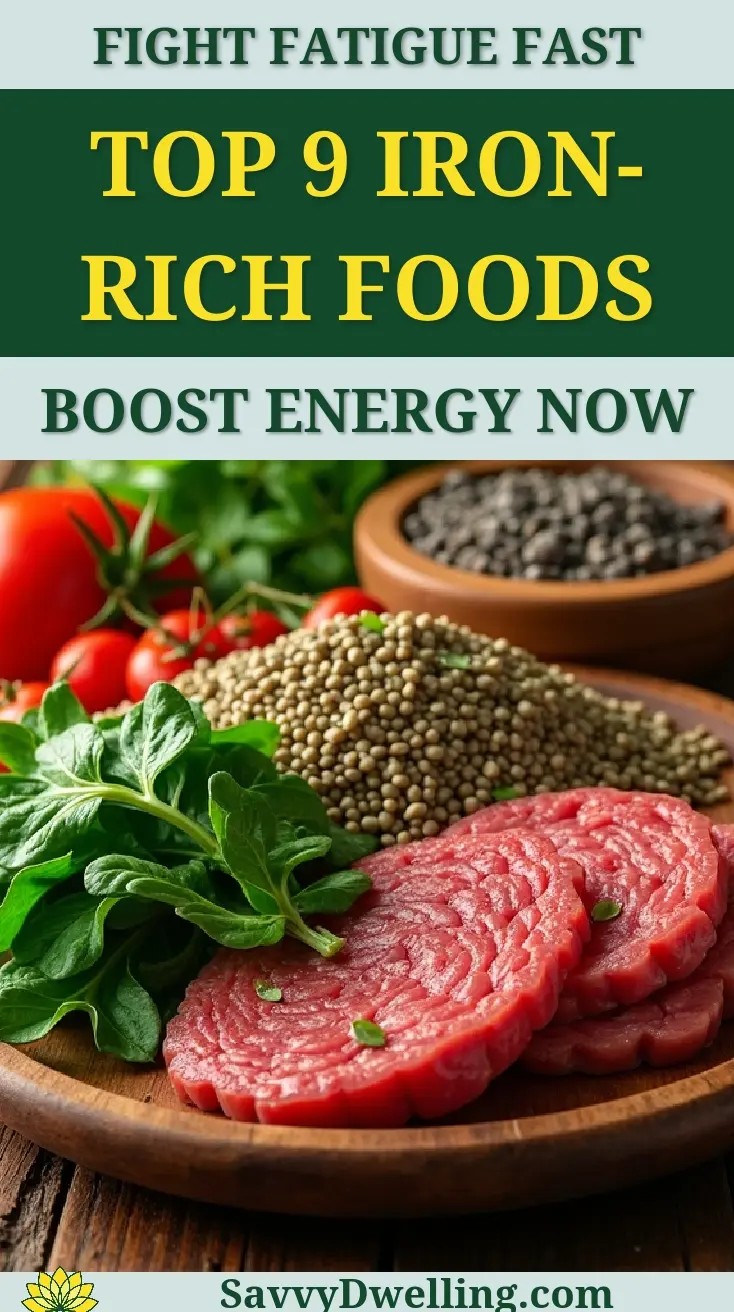What to Eat on a Keto Diet: Your Complete Beginner’s Food List for Success
Standing in the grocery store aisle, staring at endless food options while wondering what you can actually eat on keto? You’re not alone in feeling overwhelmed by conflicting information about which foods will keep you in ketosis and which ones will sabotage your progress. The transition from a carb-heavy diet to a fat-focused lifestyle can feel like learning a completely new language.
This comprehensive guide breaks down exactly which foods belong in your keto kitchen, with clear explanations that cut through the confusion. We’ve organized everything into simple categories with practical shopping tips, so you can confidently fill your cart with delicious, keto-approved foods that will fuel your body’s transformation into a fat-burning machine.
Contents
- At a Glance: The Best Keto Foods for Beginners
- 1. Protein Powerhouses: Meat, Poultry, and Eggs
- 2. Ocean’s Bounty: Fish and Seafood
- 3. Garden Gems: Low-carb Vegetables
- 4. Healthy Fats: Your Body’s New Fuel Source
- 5. Dairy Delights: Cheese, Cream, and More
- 6. Nuts and Seeds: Portable Keto Snacks
- 7. Beverages and Condiments
- Your First Keto Grocery Shopping List
- The Science Made Simple: How Keto Changes Your Body’s Fuel
- Common Mistakes to Avoid on Your Keto Journey
- Frequently Asked Questions
- Your Keto Journey Starts Now
At a Glance: The Best Keto Foods for Beginners
Starting your keto journey can feel overwhelming when you’re staring at empty grocery aisles wondering what’s actually allowed. The good news? A successful keto food list focuses on whole, unprocessed foods that naturally contain minimal carbohydrates.
Your new fuel sources will come from three main categories: high-quality proteins, healthy fats, and low-carb vegetables. Think of it as swapping your body’s gas tank from sugar to fat – a complete engine overhaul that requires the right premium fuel.
| Food Category | Daily Target | Best Examples |
|---|---|---|
| Proteins | 20-25% of calories | Grass-fed beef, wild salmon, pasture-raised eggs |
| Healthy Fats | 70-75% of calories | Avocados, olive oil, MCT oil, grass-fed butter |
| Low-Carb Vegetables | 5-10% of calories | Spinach, broccoli, cauliflower, zucchini |
| Dairy (optional) | Moderate portions | Full-fat cheese, heavy cream, Greek yogurt |
The beauty of keto foods lies in their simplicity. You’ll find that the most effective keto food items are often single-ingredient whole foods that don’t need nutrition labels. A piece of wild-caught salmon, a handful of macadamia nuts, or fresh spinach leaves – these powerhouse foods naturally align with your new eating pattern.
Your beginner keto food list should prioritize nutrient density over convenience foods. While keto-branded products flood the market, the most sustainable approach focuses on foods humans have eaten for thousands of years, just in different proportions.
Here’s what makes certain foods perfect for your keto grocery list:
- Net carbs under 5 grams per serving: Keeps you in ketosis without constant calculation
- High satiety factor: Keeps hunger at bay for hours, not minutes
- Nutrient density: Provides vitamins and minerals your body craves
- Versatility: Works in multiple meal combinations to prevent boredom
- Shelf stability: Many keto foods store well, making meal prep easier
The foods you’ll discover in the following sections aren’t just keto-compliant – they’re nutritional powerhouses that support your overall health while your body adapts to its new fuel source. This beginner keto grocery list emphasizes foods that work double duty, satisfying both your macros and your taste buds.
1. Protein Powerhouses: Meat, Poultry, and Eggs
Protein forms the backbone of any successful keto meal plan for beginners. These foods provide zero carbs while delivering essential amino acids your body needs to maintain muscle mass during fat burning.
The beauty of keto protein sources lies in their versatility. You can grill, roast, sauté, or slow-cook them without worrying about hidden carbs sneaking into your daily count.
Beef and Red Meats
Beef stands as one of the most reliable keto food items in your arsenal. Ground beef, steaks, and roasts contain zero carbohydrates while providing rich flavor and satisfying protein.
Your best beef choices for a beginner keto food list include:
- Ground beef (80/20 or 85/15 fat ratio)
- Ribeye and sirloin steaks
- Chuck roast and brisket
- Beef short ribs
- Lamb chops and leg of lamb
- Pork shoulder and pork chops
- Bacon and pancetta
These cuts naturally contain higher fat content, which aligns perfectly with what to eat on a keto diet. The marbling in these meats provides the fat your body needs while keeping you satisfied for hours.
Poultry Options
Chicken and turkey offer leaner protein options that still fit beautifully into keto foods to eat. Dark meat contains more fat than white meat, making thighs and drumsticks ideal choices for beginners.
Smart poultry selections for your keto grocery list include:
- Chicken thighs with skin
- Whole roasted chicken
- Duck breast and duck fat
- Turkey legs and thighs
- Chicken wings (without breading)
The skin contains valuable fats that support ketosis. Never remove it when following a beginner keto meal plan – that crispy skin delivers both flavor and the fats your body craves.
Eggs: The Perfect Keto Food
Eggs deserve special recognition in any keto guide for beginners. One large egg contains less than 1 gram of carbs while providing complete protein and healthy fats in the yolk.
You can prepare eggs countless ways without adding carbs:
- Scrambled with butter or heavy cream
- Hard-boiled for quick snacks
- Fried in coconut oil or ghee
- Made into omelets with cheese
- Baked as egg cups with vegetables
The versatility of eggs makes them essential keto food items. They work for breakfast, lunch, dinner, or snacks, fitting seamlessly into any easy keto meal plan.
What to Look for When Shopping
Quality matters when selecting proteins for your keto diet food list. Grass-fed beef and pasture-raised eggs contain higher omega-3 fatty acids than conventionally raised options.
Key shopping tips for your beginner keto grocery list:
- Choose fattier cuts over lean proteins
- Avoid processed meats with added sugars
- Read labels on sausages and deli meats
- Select organic when budget allows
- Buy in bulk to save money
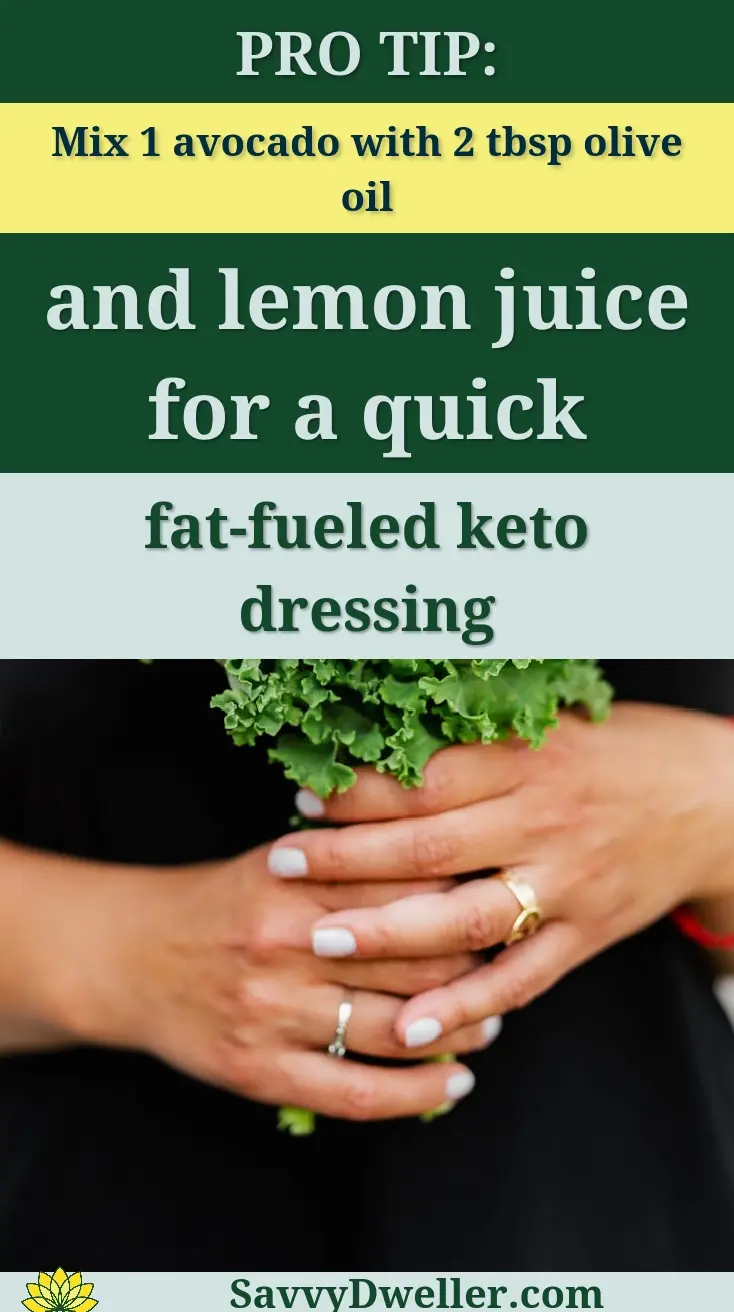
2. Ocean’s Bounty: Fish and Seafood
Seafood ranks among the best keto foods because most varieties contain zero carbohydrates. Fish provides high-quality protein plus beneficial omega-3 fatty acids that support brain health and reduce inflammation.
The ocean offers an incredible variety of options for what to eat on keto. From delicate white fish to rich, fatty varieties, seafood keeps your keto meal plan for beginners interesting and nutritious.
Fatty Fish for Omega-3s
Fatty fish deliver the perfect combination of protein and healthy fats. These varieties naturally contain the fats your body needs on keto while providing zero carbs.
Top fatty fish choices for your keto food list:
- Salmon (wild-caught preferred)
- Mackerel and sardines
- Tuna steaks and canned tuna
- Herring and anchovies
- Trout and char
- Eel and salmon roe
These fish require minimal preparation. Simply season with herbs and spices, then bake, grill, or pan-sear for a quick keto-friendly meal.
Shellfish and Crustaceans
Most shellfish contain trace amounts of carbs from natural sugars, but they remain excellent keto foods to eat. The carb content stays low enough to fit easily into your daily limits.
Shellfish options for your beginner keto food list:
- Shrimp (1 gram carbs per 3 oz serving)
- Crab and crab legs
- Lobster and lobster tail
- Scallops (2-3 grams carbs per serving)
- Mussels and clams
- Oysters (4-5 grams carbs per serving)
Oysters contain the highest carb count among shellfish, so enjoy them in moderation. Shrimp offers the best carb-to-protein ratio for strict keto followers.
Canned and Preserved Options
Canned seafood provides convenient, shelf-stable options for your keto grocery list for beginners. These budget-friendly choices require no cooking and work perfectly for quick meals or snacks.
Smart canned seafood selections:
- Canned salmon in water
- Sardines in olive oil
- Tuna packed in water or olive oil
- Canned mackerel
- Smoked salmon and lox
- Canned crab meat
Always check labels for added sugars or fillers. Choose varieties packed in water or olive oil rather than vegetable oils high in omega-6 fatty acids.
Also See: 10 Best Foods to Eat When You’re Sick With a Cold
3. Garden Gems: Low-carb Vegetables
Vegetables provide essential nutrients, fiber, and variety to what to eat on a keto diet. The key lies in choosing vegetables that grow above ground, as they typically contain fewer carbs than root vegetables.
Low-carb vegetables add color, texture, and nutrients to your beginner keto meal plan without derailing ketosis. They also provide the fiber your digestive system needs.
Above-ground Vegetables
Vegetables that grow above the soil generally contain fewer starchy carbs. These vegetables form the foundation of keto-friendly plant foods and should fill half your plate at most meals.
Best above-ground vegetables for keto foods:
- Bell peppers (red, yellow, green)
- Zucchini and yellow squash
- Eggplant and cucumber
- Tomatoes (in moderation)
- Asparagus and green beans
- Mushrooms (all varieties)
- Radishes and turnips
These vegetables typically contain 2-6 grams of net carbs per serving. Their versatility makes them perfect for roasting, grilling, or adding to casseroles.
Leafy Greens
Leafy greens represent the ultimate keto diet food because they’re incredibly low in carbs while packed with nutrients. Most leafy greens contain less than 2 grams of net carbs per cup.
Essential leafy greens for your keto food list:
- Spinach and baby spinach
- Kale and collard greens
- Arugula and watercress
- Swiss chard and bok choy
- Romaine and butter lettuce
- Cabbage (green and purple)
Use these greens as salad bases, sauté them with garlic, or blend them into smoothies. They provide folate, iron, and antioxidants your body needs while keeping carbs minimal.
Cruciferous Vegetables
Cruciferous vegetables deserve special attention in any keto guide for beginners. These nutrient-dense vegetables support liver detoxification while remaining low in net carbs.
Top cruciferous choices for keto foods to eat:
- Broccoli and broccolini
- Cauliflower and cauliflower rice
- Brussels sprouts
- Cabbage and sauerkraut
- Kohlrabi and turnip greens
Cauliflower acts as an exceptional substitute for high-carb foods. You can rice it, mash it, or use it as pizza crust – making it invaluable for easy keto meal plan adaptation.
Net Carbs Vs. Total Carbs
Understanding net carbs becomes crucial when adding vegetables to your beginner keto food list. Net carbs equal total carbs minus fiber, representing the carbs your body actually absorbs.
Calculate net carbs this way:
- Find total carbs on the nutrition label
- Subtract grams of fiber
- The result equals net carbs
For example, one cup of broccoli contains 6 grams total carbs and 2 grams fiber, resulting in 4 grams net carbs. This calculation helps you stay within your daily carb limits while enjoying nutritious vegetables.
Most keto beginners aim for 20-25 grams of net carbs daily. Vegetables rarely push you over this limit when you choose wisely and track portions accurately.
4. Healthy Fats: Your Body’s New Fuel Source
When you’re new to keto, the idea of eating more fat can feel counterintuitive. Your body needs to shift from burning glucose to burning ketones, and healthy fats become your primary energy source on this keto food list.
Quality matters tremendously here. The right fats support hormone production, brain function, and keep you satisfied between meals. Including healthy fats like avocados, nuts, and olive oil can enhance your overall diet and contribute to better health. A well-balanced diet featuring these fats can promote lasting energy and improved heart health.
Cooking Oils and Fats
Your cooking oils can make or break your keto success. Some oils contain inflammatory compounds that work against your body’s natural healing processes.
These cooking fats should become staples in your beginner keto food list:
- Avocado oil – High smoke point, neutral flavor, perfect for high-heat cooking
- Coconut oil – Contains MCTs for quick energy, solid at room temperature
- Olive oil – Best for low-heat cooking and salad dressings
- Grass-fed butter – Rich in vitamins A, D, E, and K2
- Ghee – Butter with milk solids removed, higher smoke point
- Lard and tallow – Traditional fats from pasture-raised animals
Skip vegetable oils, canola oil, and anything labeled “heart-healthy.” These processed oils create inflammation and interfere with your body’s ability to use fat for fuel effectively.
Avocados and Olives
These two foods deserve special recognition on any keto food items list. They’re technically fruits, but they’re packed with healthy fats instead of sugar.
Avocados provide nearly 30 grams of fat per whole fruit plus fiber, potassium, and folate. They’re versatile enough for breakfast, lunch, dinner, or snacks. Incorporating avocados into your diet can offer numerous health benefits as well, making them a great choice for those looking to improve their nutrition. From heart health to better digestion, there are at least 10 compelling reasons to love avocados.
Olives offer similar benefits in a more concentrated package. Just ten large olives give you about 5 grams of healthy monounsaturated fats. Look for varieties packed in brine rather than vegetable oils.
Both foods help you feel full and satisfied, which makes sticking to your beginner keto meal plan much easier during those first few weeks.
MCT Oil and Coconut Oil Benefits
Medium-chain triglycerides (MCTs) are special fats that your liver converts directly into ketones. They provide instant energy without needing to be stored first.
Coconut oil contains about 65% MCTs naturally. Pure MCT oil is even more concentrated and absorbs faster into your bloodstream. When applied to the skin, coconut oil can bring numerous benefits that enhance its natural properties. Discovering the amazing benefits of coconut oil for skin can lead to healthier and more radiant skin overall.
Start with one teaspoon of MCT oil daily to avoid digestive upset. You can add it to coffee, smoothies, or salad dressings. Work up to one tablespoon as your body adapts.
5. Dairy Delights: Cheese, Cream, and More
Full-fat dairy products are keto goldmines when you choose the right varieties. They provide protein, fat, and essential nutrients like calcium and vitamin B12.
The key is avoiding anything labeled “low-fat” or “reduced-fat” since manufacturers replace the natural fats with sugars and starches. Choosing the right types of fats is essential for maintaining overall health. This is where a healthy vs unhealthy fats guide can be particularly useful, helping you make informed decisions about what to eat.
Full-fat Cheese Options
These cheeses belong on every keto grocery list for beginners:
- Cheddar – 1 gram of carbs per ounce, versatile for cooking
- Mozzarella – Perfect for Italian dishes, about 1 gram of carbs per ounce
- Cream cheese – Essential for keto desserts and fat bombs
- Parmesan – Intense flavor means a little goes far
- Goat cheese – Easier to digest for some people
- Blue cheese – Great for salads and buffalo chicken
- Brie and camembert – Soft cheeses perfect for snacking
Hard cheeses generally contain fewer carbs than soft varieties. Always check labels since some processed cheeses contain added sugars or fillers.
Heavy Cream and Butter
Heavy cream transforms ordinary keto foods into rich, satisfying meals. One tablespoon contains less than 0.5 grams of carbs and over 5 grams of fat.
Use heavy cream in coffee, scrambled eggs, soups, and sauces. It whips into a perfect topping for keto-friendly berries or sugar-free desserts.
Grass-fed butter provides the best nutritional profile. It contains conjugated linoleic acid (CLA), which may support healthy body composition. Salted or unsalted both work fine for what to eat on keto.
Greek Yogurt Considerations
Greek yogurt requires careful attention on a beginner keto grocery list. Regular Greek yogurt contains 6-9 grams of carbs per serving, which can quickly exceed your daily limit.
Look for “Two Good” or similar brands that contain only 3 grams of carbs per cup. These use special straining processes to remove most of the natural milk sugars.
Plain, full-fat varieties work best. Flavored versions contain added sugars that will kick you out of ketosis faster than you can say “blueberry pie.”
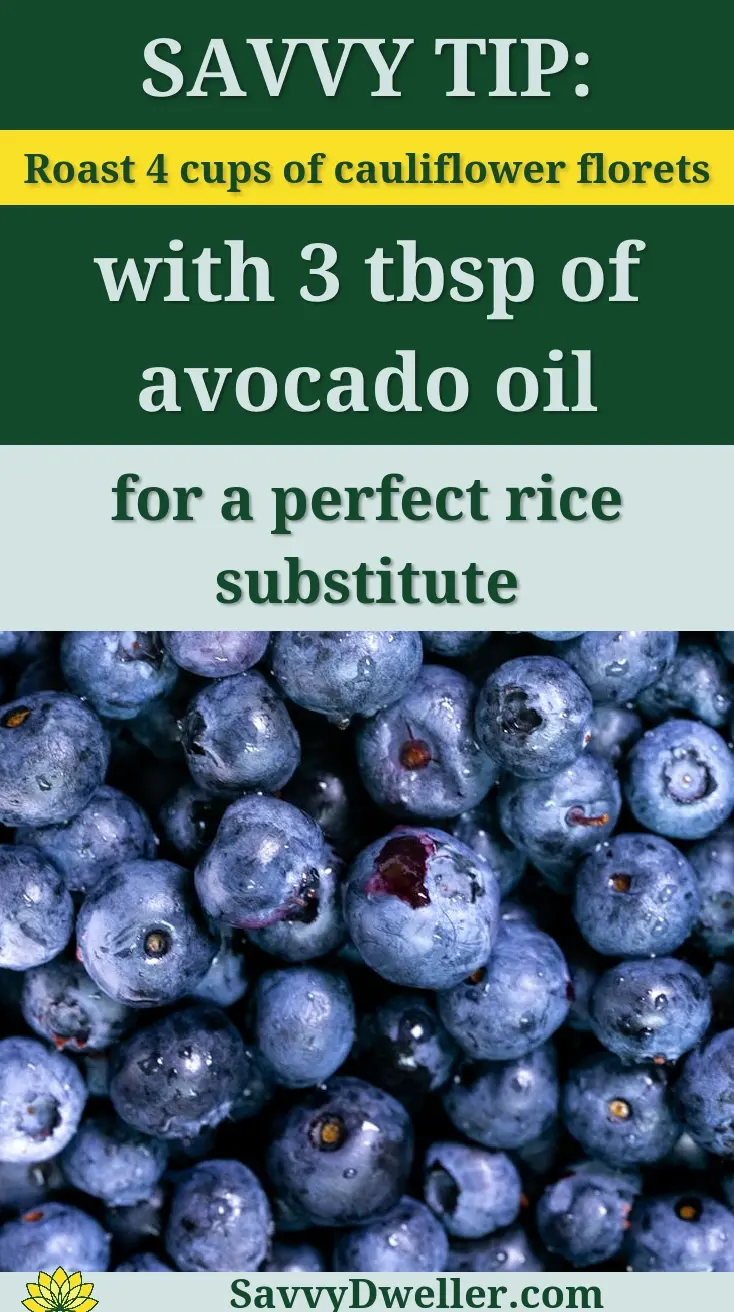
6. Nuts and Seeds: Portable Keto Snacks
Nuts and seeds make perfect grab-and-go options when you need something crunchy and satisfying. They’re nature’s fat and protein packages wrapped in convenient shells.
However, portion control becomes crucial here. It’s surprisingly easy to eat 20 grams of carbs worth of “healthy” nuts without realizing it.
Best Nuts for Keto
Not all nuts are created equal for keto foods to eat. Some varieties pack significantly fewer carbs than others.
These nuts earn top spots on your easy keto meal plan:
- Pecans – Only 1 gram of net carbs per ounce
- Macadamia nuts – 2 grams of net carbs per ounce, highest in fat
- Walnuts – 2 grams of net carbs per ounce, rich in omega-3s
- Hazelnuts – 2 grams of net carbs per ounce
- Almonds – 3 grams of net carbs per ounce
- Brazil nuts – 1 gram of net carbs per nut, limit to 2-3 daily
Avoid cashews and pistachios initially. They contain 8-9 grams of net carbs per ounce, which can derail your keto progress quickly.
Seeds and Nut Butters
Seeds often provide better carb ratios than nuts while delivering similar satisfaction and crunch factor.
These seeds deserve spots in your keto plan for beginners:
- Chia seeds – Nearly all carbs come from fiber
- Flax seeds – Grind them fresh for better absorption
- Pumpkin seeds – Great source of magnesium
- Sunflower seeds – Budget-friendly and widely available
- Hemp hearts – Complete protein with minimal carbs
For nut butters, choose natural varieties with no added sugars. Almond butter, macadamia nut butter, and tahini work well. Peanut butter is technically legume butter, but natural versions fit into most keto diet food plans.
Portion Control Guidelines
This is where many beginners struggle. Nuts taste amazing and feel healthy, making it easy to mindlessly munch your way out of ketosis.
Stick to these portion sizes to stay within your carb limits:
- Pre-portion nuts into small containers or bags immediately after buying them
- Limit yourself to one ounce (about 1/4 cup) per serving
- Count out individual nuts if needed – 14 walnut halves equals one ounce
- Avoid eating directly from large containers or bags
- Choose nuts in shells when possible to slow down consumption
If you find yourself overeating nuts regularly, take a break from them for a week or two. Your taste buds will recalibrate, making smaller portions more satisfying. Incorporating specific nuts like walnuts into your diet can significantly enhance your overall health. In fact, walnuts offer a range of benefits comparable to other nuts, making them a nutritious choice worth exploring.
7. Beverages and Condiments
The drinks and seasonings you choose can either support your keto journey or sabotage it completely. Many seemingly innocent additions contain hidden sugars that add up quickly throughout the day.
The good news is that plenty of flavorful options exist once you know what to eat on a keto diet beyond just main dishes.
Keto-friendly Drinks
These beverages should become your daily go-to options:
- Water – Plain, sparkling, or infused with lemon or cucumber
- Black coffee – Add heavy cream, butter, or MCT oil for extra richness
- Plain tea – Green, black, herbal, or oolong varieties
- Bone broth – Provides electrolytes and satisfies hunger
- Unsweetened almond milk – Choose varieties with under 2 grams of carbs per cup
- Coconut milk – The canned, full-fat version for cooking
Diet sodas technically fit keto macros, but artificial sweeteners can trigger cravings and stall weight loss for some people. Sparkling water with a splash of sugar-free flavoring often works better.
Alcohol requires special consideration. Dry wines, spirits, and light beers contain fewer carbs than sweet cocktails or regular beer, but alcohol can temporarily halt fat burning.
Herbs, Spices, and Seasonings
Fresh and dried herbs contain virtually zero carbs while transforming simple keto foods into restaurant-quality meals.
These flavor enhancers belong in every keto guide for beginners:
- Garlic powder – More concentrated than fresh, longer shelf life
- Onion powder – Adds depth without the carbs of whole onions
- Paprika – Sweet or smoked varieties for different flavor profiles
- Italian seasoning – Blend of oregano, basil, thyme, and rosemary
- Cumin – Essential for Mexican and Middle Eastern dishes
- Fresh herbs – Basil, cilantro, parsley, and chives
- Salt and pepper – Quality sea salt or pink Himalayan salt
Avoid seasoning blends that list sugar, dextrose, or maltodextrin in the ingredients. These additives can add unexpected carbs to your beginner keto meal plan.
Low-carb Sweeteners
Transitioning away from sugar doesn’t mean giving up sweet flavors entirely. Several natural and artificial sweeteners work well for keto baking and beverages.
These sweeteners won’t interfere with ketosis when used appropriately:
- Stevia – Natural plant extract, use sparingly due to intense sweetness
- Erythritol – Sugar alcohol that measures cup-for-cup like sugar
- Monk fruit – Natural option, often blended with erythritol
- Xylitol – Good for baking, but toxic to dogs
- Sucralose – Splenda without the bulking agents
Start with smaller amounts than you think you need. Your taste buds become more sensitive to sweetness as you reduce your overall sugar intake. Many people find they need less sweetener after a few weeks on keto.
Avoid maltitol, which can cause digestive issues and may impact blood sugar. Also skip anything ending in “-ose” as these are typically forms of sugar in disguise.
Your First Keto Grocery Shopping List
Starting your keto journey can feel overwhelming when you’re standing in the grocery store wondering what actually belongs in your cart. You want to set yourself up for success without breaking the bank or buying items that will sit unused in your pantry.Your first shopping trip should focus on versatile, whole foods that form the foundation of most keto meals. Think of this as building your keto toolkit rather than stocking up on specialty items you might never use.
Essential Items for Week One
Your beginner keto grocery list should include these must-have items that work across multiple meals:
- Proteins: Ground beef (80/20), chicken thighs, eggs, and canned tuna
- Fats: Olive oil, butter, avocados, and full-fat cheese
- Vegetables: Spinach, broccoli, cauliflower, and bell peppers
- Pantry staples: Sea salt, black pepper, garlic powder, and coconut oil
- Beverages: Unsweetened almond milk, sparkling water, and green tea
These keto food items give you enough variety to create satisfying meals while you adjust to your new eating pattern. You can make scrambled eggs with cheese for breakfast, a chicken and avocado salad for lunch, and ground beef with broccoli for dinner.
Budget-friendly Options
Eating keto doesn’t have to drain your wallet if you focus on affordable staples that deliver maximum nutrition. Many people assume keto is expensive because they see specialty products, but the most effective keto foods are often the most budget-friendly.Eggs remain one of the most cost-effective protein sources on keto, providing complete nutrition for pennies per serving. Buy them in bulk when they’re on sale and use them in everything from breakfast scrambles to egg salad.Ground meat typically costs less than premium cuts and works perfectly in keto casseroles, lettuce wraps, and skillet meals. Frozen vegetables often contain more nutrients than fresh ones and last longer in your freezer.Consider these money-saving swaps:
- Canned fish instead of fresh salmon
- Chicken thighs instead of breasts
- Frozen broccoli instead of fresh
- Block cheese instead of pre-shredded
- Coconut oil instead of MCT oil
Meal Prep Staples
Successful keto beginners often rely on meal prep to avoid making poor food choices when hunger strikes. Stock up on ingredients that cook well in batches and reheat beautifully throughout the week.Hard-boiled eggs, cooked ground meat, and roasted vegetables become the building blocks for quick keto meals when you’re pressed for time. You can mix and match these components to create different flavor profiles without starting from scratch each day.Your meal prep shopping list should include:
- Large containers for batch cooking
- Sturdy vegetables like Brussels sprouts and cauliflower
- Versatile proteins like chicken thighs and ground turkey
- Healthy fats like avocado oil for roasting
- Storage containers for portioning meals
The Science Made Simple: How Keto Changes Your Body’s Fuel
Your body normally runs on glucose from carbohydrates, much like a car running on gasoline. When you drastically reduce carbs on a keto diet, you force your body to find an alternative fuel source.After 2-4 days of very low carb intake, your liver begins producing ketones from stored fat. These ketones become your brain’s new primary energy source, while your muscles can use both ketones and fatty acids directly.This metabolic shift, called ketosis, happens when your blood ketone levels reach 0.5-3.0 millimolar. Your body essentially becomes a fat-burning machine instead of a sugar-burning one.The transition period, often called the “keto flu,” occurs because your body is learning to use this new fuel efficiently. You might feel tired or foggy for a few days as your cells adapt to burning ketones instead of glucose.Once you’re fully adapted (usually within 2-4 weeks), many people report increased mental clarity and stable energy levels throughout the day. This happens because ketones provide a more consistent energy source than the glucose rollercoaster from carb-heavy meals.
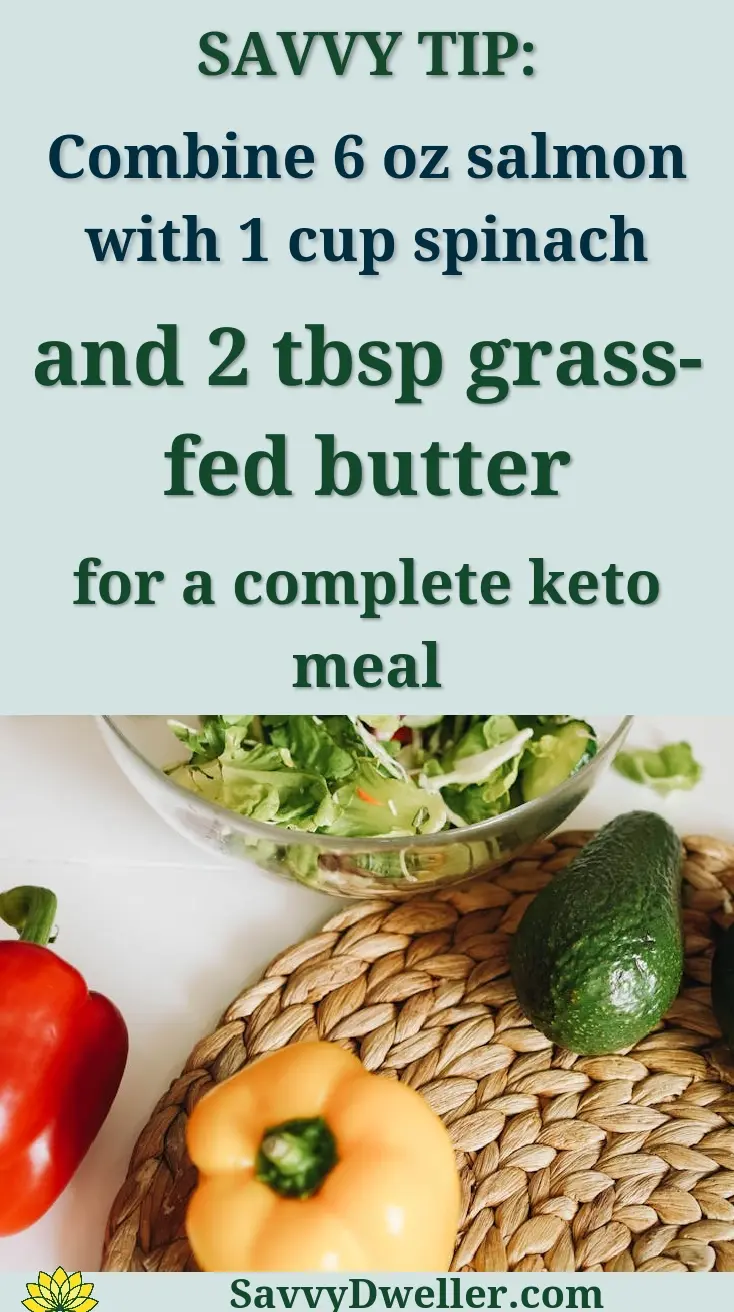
Common Mistakes to Avoid on Your Keto Journey
Even with the best intentions, beginners often stumble on seemingly simple aspects of keto. These mistakes can slow your progress or make you feel unnecessarily miserable during the transition.Learning to spot these pitfalls before they derail your efforts will save you weeks of frustration. Most of these issues stem from misconceptions about what keto actually requires.
Hidden Carbs in “Healthy” Foods
Many foods marketed as healthy contain surprising amounts of carbs that can kick you out of ketosis. You might think you’re making smart choices while unknowingly sabotaging your progress.Fruits like apples, bananas, and grapes contain 15-25 grams of carbs each, which could use up your entire daily carb allowance in one sitting. Even “healthy” vegetables like carrots and beets are surprisingly high in sugar.Watch out for these sneaky carb sources:
- Sugar-free gum (2-3 grams per piece)
- Tomato sauce (6-12 grams per serving)
- Onions (8 grams per medium onion)
- Low-fat yogurt (15-20 grams per cup)
- Protein bars (10-30 grams each)
Always check nutrition labels, even on foods you assume are keto-friendly. Many condiments, dressings, and seasonings contain added sugars that add up quickly throughout the day.
Not Eating Enough Fat
Coming from a low-fat mindset, many beginners struggle to eat adequate fat on keto. You might feel satisfied eating lean proteins and vegetables but wonder why you’re constantly hungry or lacking energy.Fat should comprise 70-80% of your daily calories on keto, which means actively adding fats to most meals. This isn’t just about cooking with oil; you need substantial fat sources like avocados, nuts, and full-fat dairy.If you’re eating grilled chicken breast with steamed broccoli, you’re doing keto wrong. That same meal becomes keto-appropriate when you cook the chicken in butter, add cheese to the broccoli, and include half an avocado on the side.Common signs you’re not eating enough fat:
- Constant hunger between meals
- Energy crashes in the afternoon
- Difficulty staying in ketosis
- Feeling cold or tired frequently
Forgetting About Electrolytes
When you cut carbs, your body releases excess water along with important electrolytes like sodium, potassium, and magnesium. Many keto beginners feel terrible during their first week because they’re actually dehydrated and depleted of these crucial minerals.You need significantly more salt on keto than you’re probably used to consuming, often 2-3 teaspoons per day from all sources. This goes against conventional health advice, but your electrolyte needs change dramatically when you’re not eating carbs.The “keto flu” symptoms—headaches, fatigue, muscle cramps, and brain fog—are often just electrolyte deficiency in disguise. Adding a pinch of sea salt to your water or sipping bone broth can provide immediate relief.Simple electrolyte solutions:
- Add 1/4 teaspoon sea salt to 16 oz water
- Eat pickles or pickle juice as snacks
- Use lite salt (potassium chloride) on food
- Take a magnesium supplement before bed
Going Too Strict Too Fast
Enthusiasm can work against you when starting keto. You might try to cut carbs to near zero while simultaneously eliminating all your favorite foods, setting yourself up for intense cravings and potential failure.Your body needs time to adjust to burning fat efficiently, and your taste preferences need time to shift away from sugar and processed foods. Jumping into the strictest version of keto immediately often leads to unsustainable restrictions.Start with 30-50 grams of net carbs daily for the first week, then gradually reduce to 20 grams or less. This gentler approach helps you identify which foods work for your body while avoiding the shock of dramatic change.Allow yourself keto-friendly treats like sugar-free chocolate or almond flour cookies during your first month. These foods aren’t optimal long-term, but they can help you stay compliant while your cravings subside.
Frequently Asked Questions
Can I Eat Fruit on a Keto Diet?
Most fruits are high in sugar and carbohydrates, making them unsuitable for keto. However, small servings of low-carb berries like raspberries, blackberries, and strawberries can be enjoyed in moderation, typically 1/4 to 1/2 cup, as they have fewer net carbs. Always track these portions to avoid exceeding your daily carb limit, which is usually 20-50 grams.
Steer clear of high-sugar fruits such as bananas, apples, and mangoes. Instead, satisfy your sweet cravings with keto-friendly options like avocados or a sprinkle of cinnamon on full-fat yogurt to stay on track. It’s surprising how many foods, even those that seem healthy, can be loaded with hidden sugars. Exploring the list of surprising foods high in sugar can help make informed choices for a healthier lifestyle.
Is Alcohol Allowed on a Keto Diet?
Yes, but choose wisely to maintain ketosis. Opt for dry wines, spirits like vodka or whiskey (neat or with sugar-free mixers), and light beers, as they contain minimal carbs. Remember that alcohol can pause fat-burning until it’s metabolized, so consume in moderation-limit to one drink occasionally.
Avoid sugary cocktails, regular beers, and sweet liqueurs, which are high in carbs. Always hydrate well and eat a low-carb meal before drinking to reduce negative effects like slowed ketosis or poor food choices.
How Can Vegetarians Follow a Keto Diet?
Vegetarians can thrive on keto by emphasizing high-fat, low-carb plant foods like avocados, nuts, seeds, and full-fat dairy (if consumed). Include protein sources such as eggs, tofu, tempeh, and low-carb protein powders to meet daily needs without exceeding carb limits.
Focus on non-starchy vegetables like spinach and broccoli, and avoid high-carb vegetarian staples like beans, lentils, and grains. Plan meals around fats like coconut oil and olive oil to ensure you get enough energy while keeping net carbs under 20-30 grams per day. Including low glycemic foods can help maintain stable energy levels throughout the day, preventing those sluggish dips often associated with high-carb diets.
How Long Does It Take to Enter Ketosis?
Typically, entering ketosis takes 2 to 7 days after reducing carb intake to 20-50 grams daily. Factors like your starting diet, activity level, and metabolism can affect this timeline. To accelerate the process, try intermittent fasting or light exercise.
During this transition, you might experience “keto flu” symptoms like headaches or fatigue. Combat this by increasing electrolyte intake with sodium, potassium, and magnesium from sources like bone broth or supplements, and stay hydrated to ease the adjustment.
Your Keto Journey Starts Now
Starting a keto diet doesn’t have to feel overwhelming when you have the right food list in hand. The key to keto success lies in keeping things simple-focus on whole, unprocessed foods that naturally fit the low-carb, high-fat framework. Remember, every expert was once a beginner, and your body will adapt to this new way of eating as you stay consistent with your choices.
Take your time building these new eating habits, and don’t expect perfection from day one. Use this beginner’s food list as your roadmap, but listen to your body and adjust portions based on how you feel. The beauty of keto is that once you understand which foods work for you, meal planning becomes second nature.
Ready to transform your kitchen into a keto-friendly space? Start with just a few items from each food category and gradually expand your repertoire. For more practical wellness tips and home solutions that support your healthy lifestyle, check out Savvy Dwelling where we share research-backed advice to help you create a thriving home environment that works for you.
Useful References for You:
- The Ketogenic Diet: A Detailed Beginner’s Guide to Keto
- Keto Diet: A Beginner’s Guide
- Keto Diet For Beginners | Keto Meal Prep | Keto Diet Plan | H&B
Also See: Why Salmon is One Of the Healthiest Foods You Can Eat

